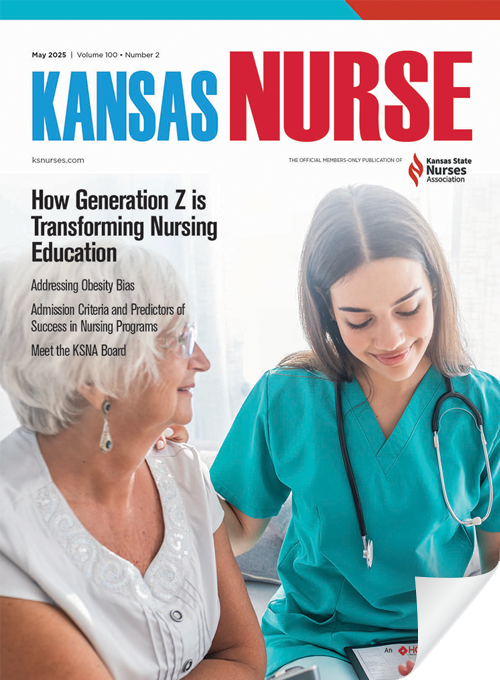Thank you for visiting! Below are recent articles from Kansas Nurse, the official members-only publication of the KSNA.
To learn more about KSNA visit www.ksnurses.com.


Thank you for visiting! Below are recent articles from Kansas Nurse, the official members-only publication of the KSNA.
To learn more about KSNA visit www.ksnurses.com.
Working with Generation Z nurses has been both innovative and transformative. Defined as individuals born between 1997 and 2012, Generation Z brings a unique perspective to nursing, shaped by their experiences, educational background, and the global impact of the COVID-19 pandemic. As an educator, adapting to this generation’s needs requires a deep understanding of their characteristics and a commitment to ensure nursing orientation and education has been designed for their success.
Excellence in Nursing Education
Offering BSN, MSN-FNP, and
Master of Science in Nursing programs.
Beef helps make every bite count.
Learn More About How
Beef Supports Growth & Development
Earn a degree or certification in: Nursing, CAN, CMA, CPR,
Sonography, Dietary Manager, Healthcare Coding, EMT,
HIT, OTA, Medical Assistant. Phlebotomy, & Surgical Technology
Just right, just for you.
We offer multiple programs at an affordable price for you to earn or advance your nursing education. Our exceptional faculty are ready to help you to achieve your goals!
Since its founding Baker’s School of Nursing has
evolved to meet the needs of nurse, their patients
and the health care community.






